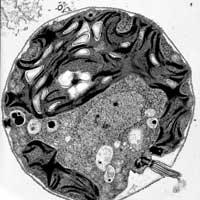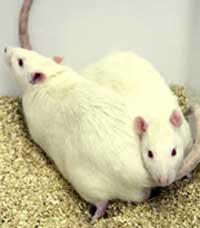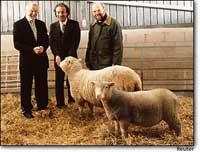Cloning so close and so far
2002/02/11 Carton Virto, Eider - Elhuyar Zientzia
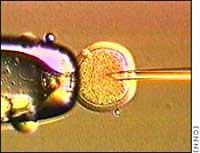
We have repeatedly repeated what cloning consists of: the genetic material of an adult cell is integrated into an egg without a nucleus to develop an embryo with certain genetic characteristics. From a practical point of view cloning currently has no great mysteries: mice, sheep, cows, pigs, etc. They have cloned quite ‘easily’. It seems that scientists dominate the technique and we have passed very quickly from sheep to talk about humans, but there are still basic questions to answer.
Many of them are reprogramming. When the ‘ancient’ genetic material of the adult cell is incorporated into the egg, it ‘rejuvenates’ this DNA, that is, gives it the characteristics that an embryo’s DNA would have. This process is very fast and is believed to be the origin of most of the cloning errors.
In this regard, the Japanese Institute of Infectious Diseases has analyzed the survival of cloned mice. It has compared the survival of 12 cloned mice and 7 more. In addition, by inserting sperm into the eggs, they have created another 6 mice that simulate the steps that are made in the cloning. Of the 12 cloned mice, 10 died from pneumonia and liver disease before 800 days – the survival of mice is 800 days – while of the others only three died.
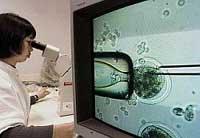
According to Japanese researchers, most clones die before birth or immediately after birth and the few advancing advance ‘marked’. That is, they will show in the long term unpredictable errors. The Japanese consider cloning to be defective and those errors will always appear to a greater or lesser extent. Others consider, however, that the full mastery of the technique will avoid these errors.
Possible key in cell selection
Researchers at the Whitehead Institute of Cambridge have gone to the roots of cloning and have tried to answer one of the basic questions. Can the DNA of adult cells be reprogrammed and converted into DNA of embryos? Or put another way, have all cloned animals so far been obtained from mature cells?
So far, it has been considered acceptable that the answer to this question was affirmative, although it has never been demonstrated. Dolly and all others have been obtained from the DNA of adult cells, but it may not be so. Cloned animals may be a consequence of special stem cells mixed with mature cells.
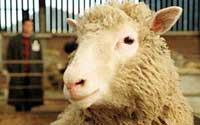
To demonstrate this hypothesis, researchers at the Whitehead Institute clone mice from adult B and T lymphocytes. These components of the immune system contain distinctive genetic marks, so cloned mice are added if the cloned embryo develops from mature cells.
After 1,000 trials, 260 embryos were installed, of which 21 mice were born. Thus, they have shown that from the genetic material of adult cells clones can be obtained, although the results are very poor. Together with Dolly, for example, the success of the experiment has been much more limited.
Therefore, they consider that they have not achieved the definitive test. On the one hand, the possibility of obtaining reprogrammed and cloned embryos from the ‘old’ genetic material of adult cells has been shown, but the scant success of this process makes it impossible to ensure that all cloned animals are the fruit of adult cells. Some cells may be more suitable than others. The question remains in the air as a sign of the complexity of cloning.
More information: In the journal Nature

Gai honi buruzko eduki gehiago
Elhuyarrek garatutako teknologia




